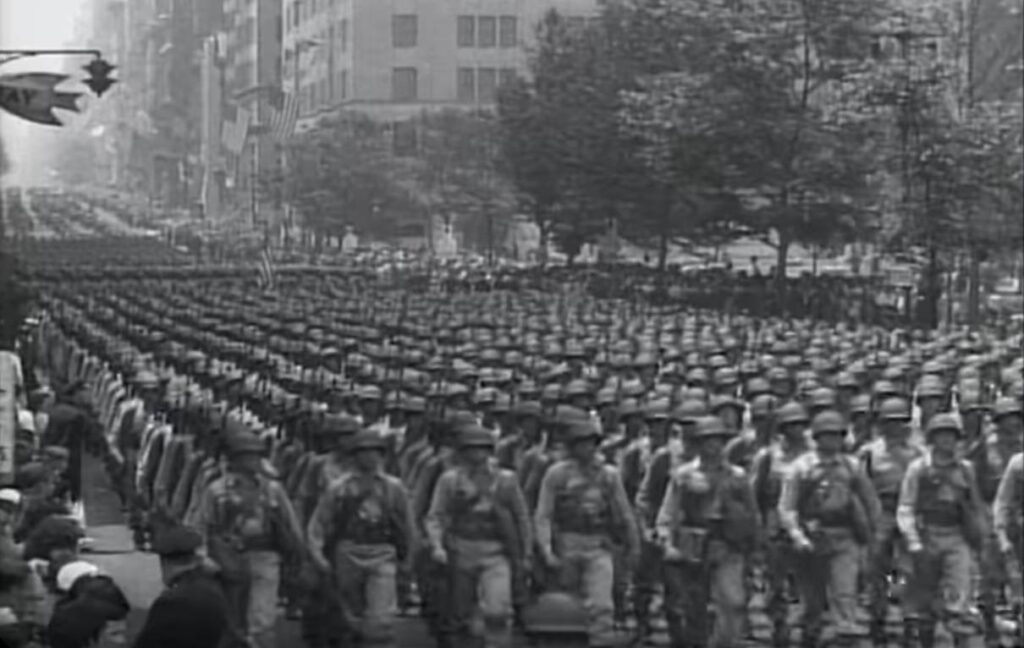Memorial Day began in 1868 at Arlington National Cemetery as a commemoration of the Civil War dead. It was originally called Decoration Day due to the practice of decorating graves and was held on May 30 no matter what day of the week that fell on. In 1971, the observance was changed to the last Monday in May as the end of a federally mandated, three-day holiday weekend. It is now ingrained in the minds of most Americans as the traditional start of summer – so much so that the solemn reasons behind the holiday have faded despite the continuing sacrifices of our military men and women. Memorial Day, 1945 was on Wednesday, May 30 and came at a time during World War II of great joy and continued trepidation.

Seventy-five years ago, the days leading up to Memorial Day were uneasy and filled with mixed emotions. Yes, there was remembrance – especially of the recently lost heroes of World War II – but there was also celebration of V-E Day, which had occurred earlier in the month on May 8 when Germany signed an unconditional surrender. Mixed with the remembrance and celebration was the continuing feeling of dread since the war in the Pacific with Japan still raged on. Many soldiers who had just finished fighting in Europe feared they would be sent to the other side of the world to continue the fight against Japan, rather than be sent back to the United States for a victorious homecoming.
Historical events leading up to Memorial Day in 1945 included both momentous victories and horrifying casualties. By Spring, both the Nazis and Allies knew who was going to win the war, and this obviously led to different reactions on both sides. In early May, approximately 1,000 citizens of Demmin, Germany committed suicide provoked by occupation of the Soviet Red Army. Also, in early May millions of German soldiers surrendered to the Allies in Italy, Austria, Bavaria and the Netherlands. Concentration camps were liberated by the Allies. Czechoslovakia and Denmark were liberated from Nazi occupation. By mid-May US troops were facing fierce battles in Okinawa, which cost the US the lives of more than 12,000 soldiers, sailors, and marines. Kamikaze Zeroes attacked the US aircraft carrier Enterprise. US air forces dropped firebombs on Tokyo. In the South Pacific, General Douglas MacArthur fulfilled his promise to return to the Philippines.

As Memorial Day dawned, many observances were particularly solemn. In the Pacific theater, recent graves were decorated in cemeteries with names unknown a year earlier: Saipan, Iwo Jima, Leyte, Peleliu. At home in the US, Eleanor Roosevelt hoped to pay a visit to husband Franklin’s fresh grave in New York, but instead found an overflow crowd of citizens paying their own respects to honor the man who had led America longer than any other president, only to die within sight of victory. New president Harry Truman sent a message to a “Salute to the GI’s of the United Nations” rally in Madison Square Garden, where both the American Secretary of State and the Soviet Ambassador to the United States were in attendance. Each praised Soviet-American cooperation in the war and expressed hope for a long-lasting peace. On the West Coast, shipyards continued to fill supply lines with men and materials in anticipation of costly invasions still expected to come. And yet there was also a sense of anticipation for large numbers of servicemen soon to return home.
On that Memorial Day seventy-five years ago, the hope was that battlefields would become relicts of the past. Unfortunately, that has not been the case – no one foresaw at that time the places where American forces would be required to make a stand in the future – Korea, Vietnam, Kuwait, Afghanistan, Iraq, and others.
So, on this Memorial Day, we honor the sacrifices of the men and women who have served or currently serve our country. And we should pledge to never forget that we would not have the privilege of celebrating this day and honoring the memories of so many without the sacrifices of those who have given their last full measure of devotion to their country.


